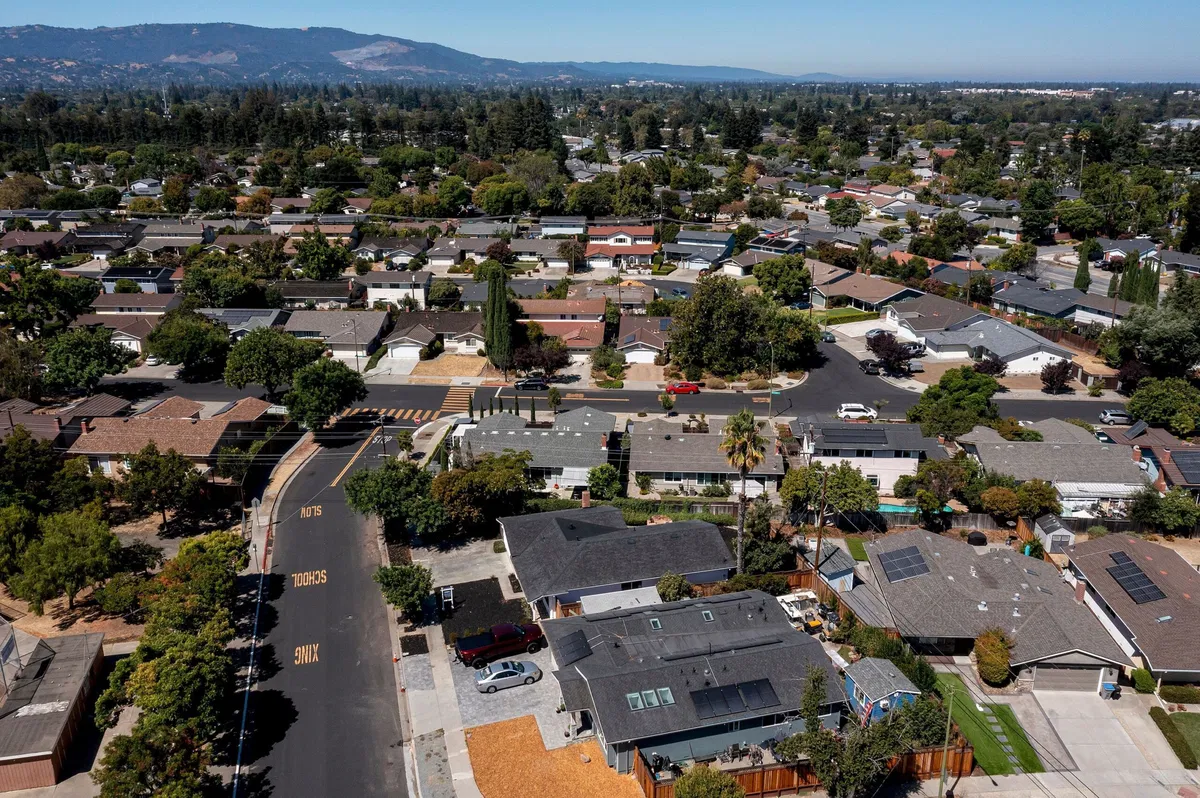Mortgage rates continued to decline this week, taking a little more pressure off America’s tight housing market as the Federal Reserve ramps up its efforts to keep the economy on an even keel.
The standard, 30-year fixed-rate mortgage averaged 6.09% in the week ended September 19, Freddie Mac said Thursday, down from last week’s 6.20% and substantially below a two-decade peak of 7.79% seen last fall. It’s the lowest level since early February 2023.
The latest news on mortgage rates is an encouraging sign for buyers on the sidelines waiting for housing affordability to improve.
A separate report from the National Association of Realtors released Thursday showed that sales of previously owned homes in the United States fell sharply in August, despite mortgage rates plummeting that month. But with mortgage rates continuing a downward trend, much more housing demand will likely be unleashed onto the market after the Federal Reserve finally cut interest rates this week for the first time in four years — and signaled more rate cuts by year’s end.
Existing home sales, which make up the vast majority of the market, slumped 2.5% in August from the prior month to a seasonally adjusted annual rate of 3.86 million, according to NAR data. That was the lowest August sales level since 2010. Meanwhile, home prices continued to climb last month, with the median price of an existing home rising 3.1% to $416,700, the 14th straight year-over-year increase and a record for August home prices.
“Home sales were disappointing again in August, but the recent development of lower mortgage rates coupled with increasing inventory is a powerful combination that will provide the environment for sales to move higher in future months,” Yun said in a release.
Purchasing a home has become tougher for millions of Americans in recent years, with mortgage rates climbing after the Fed jacked up borrowing costs and home prices skyrocketing as many markets struggled with housing shortages. That led to the housing market languishing last fall — and right when a recovery began to take hold in early 2024, that momentum was cut short because the Fed was forced to keep rates on hold much longer than previously expected to tamp down lingering inflation pressures.
Now, the entire US economy has begun a new chapter after the Fed delivered on Wednesday the first rate cut since the onset of the Covid-19 pandemic in early 2020. Fed officials expect their key interest rate, which influences borrowing costs across the economy, to be lower by half a point by the end of the year.
Lower borrowing costs will likely entice buyers
Mortgage rates could very well come down even more, but that would depend on economic data making it clear that the Fed would cut rates further.
The Fed doesn’t control mortgage rates, but its action do influence them through movements in bond yields. Mortgage rates track the 10-year US Treasury yield, which moves in anticipation of the Fed’s decision on rates. For example, when the July jobs report showed that payroll growth was weaker than expected that month and that unemployment ticked up, it caused yields to tumble because it meant the Fed would likely cut rates soon. Yields have also fallen on news of inflation continuing to moderate.
“So far, those buyers who waited may be glad that they did,” wrote Daniele Hale, chief economist at Realtor.com, in a note Thursday. “Not only have mortgage rates continued to fall into early September, but we’re also nearing a seasonal sweet spot for homebuyers, when competition usually wanes, home prices ease, and time on market tends to grow.”
Yun told reporters it could take three or four months for lower mortgage rates to boost demand for housing.
“Some people have to first inform their landlord saying ‘I’m going to finish my lease in a couple of months,’ especially first-time buyers, and then they search for a home, all of that process. I think that will take about three or four months, so, given that mortgage rates were already lower in July, that should begin to show up by October,” Yun said.

